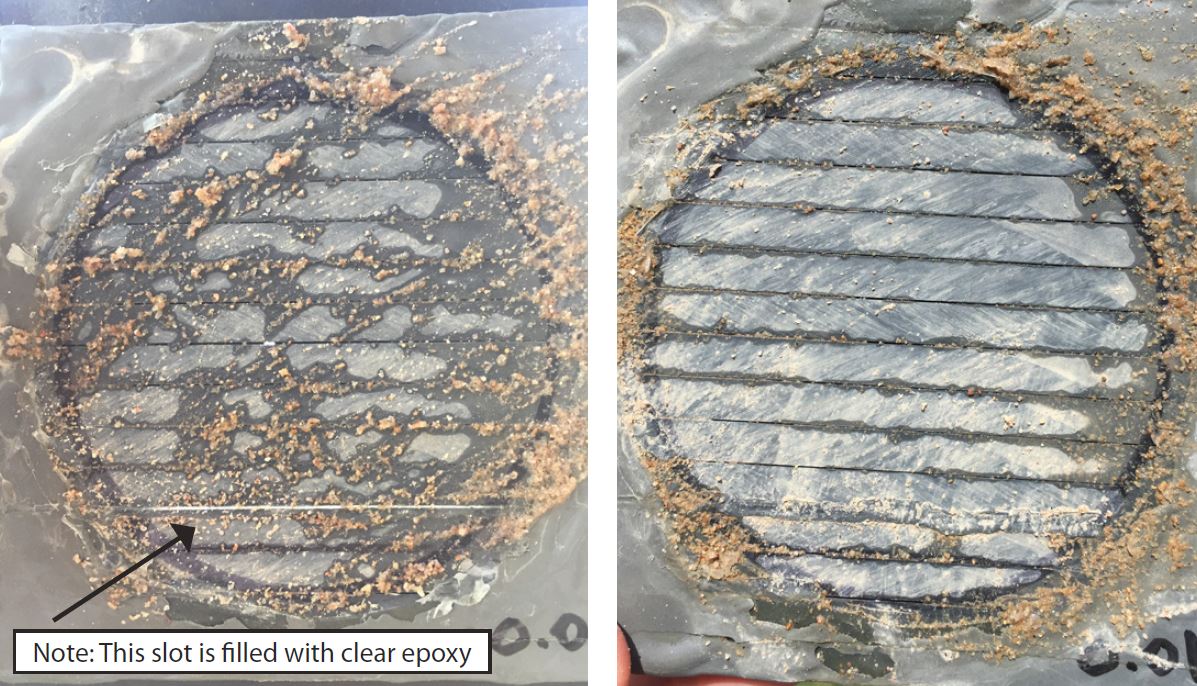Clog Away: Usage of Small-Slot Drainage Pipes

 Looking at an industry-accepted practice, a Freese and Nichols study examined the use of small slotted drainage pipes in dams.
Looking at an industry-accepted practice, a Freese and Nichols study examined the use of small slotted drainage pipes in dams.
The Association of State Dam Safety Officials recently featured the findings of Marc Miller, PE, left, and Grady Hillhouse, PE, right, in the Journal of Dam Safety.
The Issue
Internal drains are commonly used to relieve pore pressure and control seepage in dams. These drain systems often include slotted or perforated pipes, and the pipe size openings depend on the type of filter medium used. When pipe openings become clogged, drain efficiency is reduced and can lead to pressure increases that introduce performance uncertainties and a reduction in dam safety.
Since smaller openings seem more prone to clogging, the dam industry has trended away from the use of small slotted pipes, particularly when sand is used as the filter medium. Although this concept is widely accepted, published case studies indicate that these findings are generally anecdotal in nature.
The Findings
The study suggested that small slotted pipes are prone to clogging from both adverse construction factors and seepage flows that carry soil particles. Given the improvement that two-stage filter systems are known to provide, the study suggested that their use is still preferred over single-stage sand filters with narrow slot pipes for primary or critical seepage collection systems.
When evaluating existing single-stage filters with slotted pipes, this study indicates that reduced flow should be expected. It is likely that the degree of clogging in the field is greater than indicated given the short duration of the test intervals.
The article is one part of our collaboration with ASDSO. Freese and Nichols developed and will host a training course for the ASDSO course catalog about using HEC-RAS 2D March 19-21 in Baltimore. Click here for more details.


